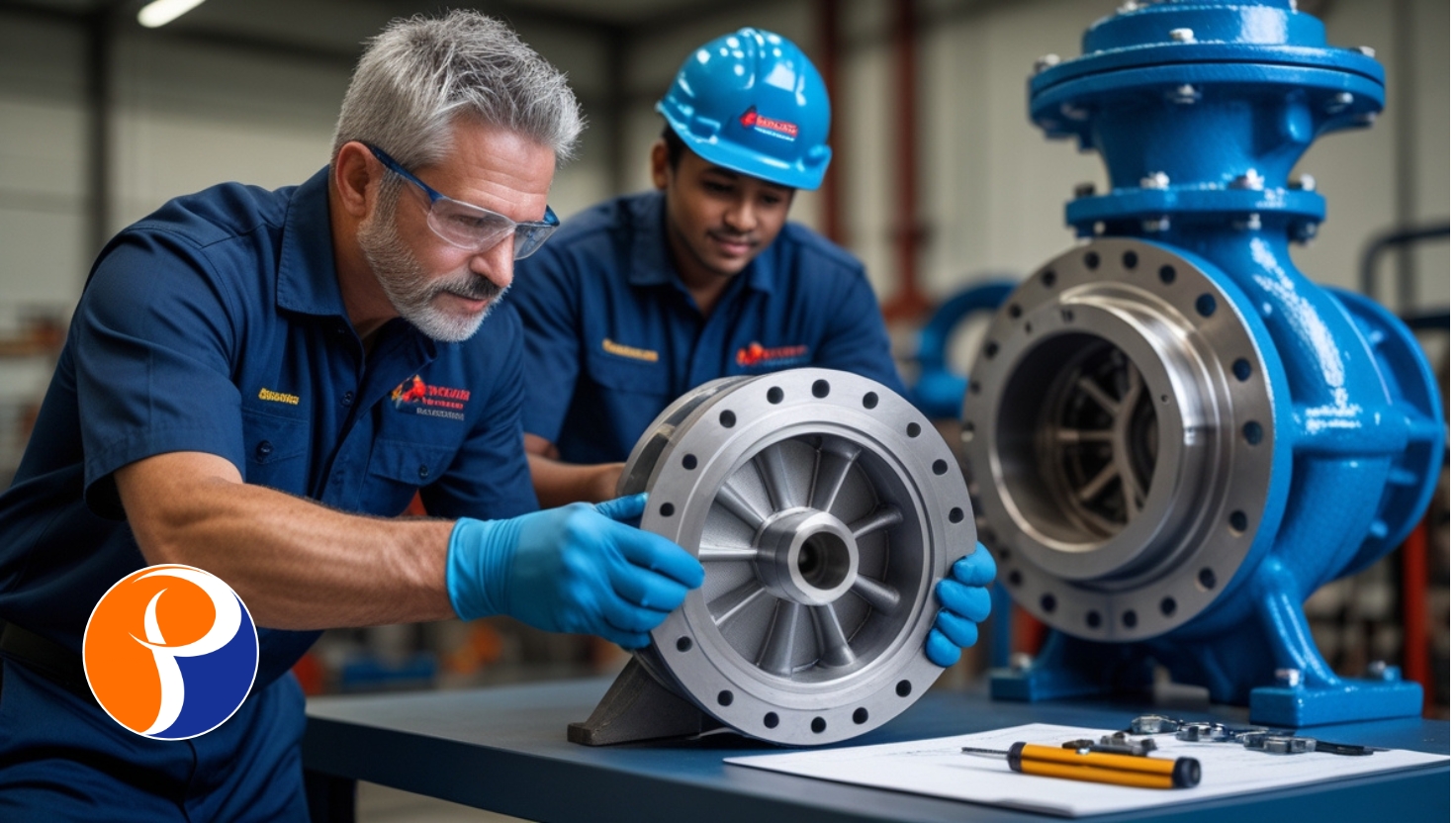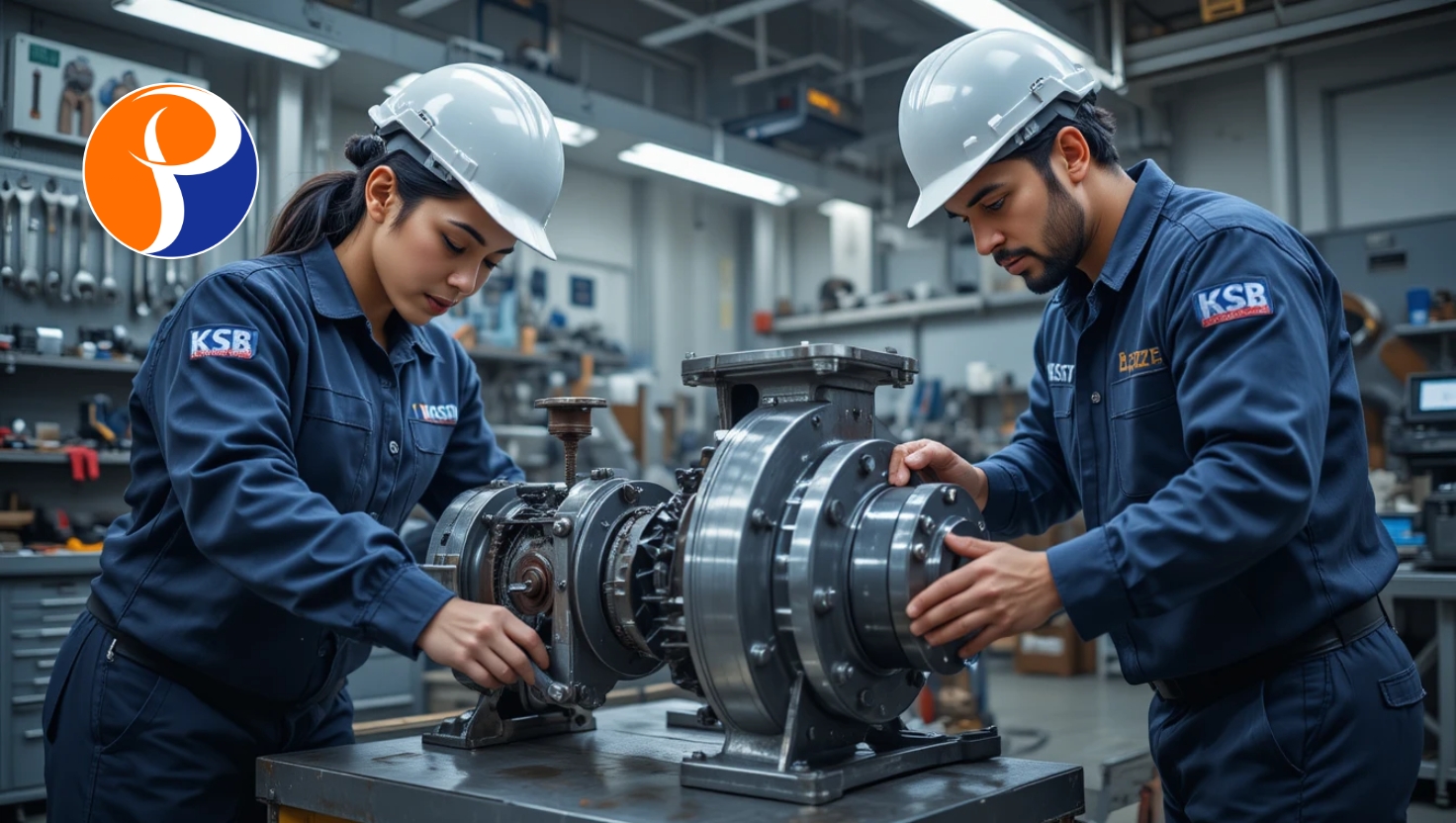
Centrifugal Pump Maintenance and Services
Let’s be honest, the humble centrifugal pump doesn’t get much glory. It’s not the flashy, high-tech control panel or the massive turbine that steals the show. The centrifugal pump is the workhorse, toiling away in boiler rooms, treatment plants, and industrial sites, moving fluids from A to B. But ignore this quiet achiever, and you’ll quickly learn a costly lesson: an unhappy pump is a production-stopping, budget-busting nightmare.
Think of pump maintenance as something like going to the dentist. You can skip your check-ups, and everything might seem fine. But then, one day, a minor cavity turns into a root canal—a painful and expensive ordeal. Regular, simple care for your pump is the equivalent of brushing and flossing; it prevents the industrial equivalent of a root canal, which often involves cranes, replacement parts, and a lot of head-scratching engineers. This guide, from the team at pumpsservices.com, will walk you through everything you need to know to keep your pump purring like a kitten, not screaming like a banshee. We’ll cover the essential centrifugal pump maintenance procedure, the must-have checklists, and how to interpret those cryptic manufacturer manuals.
Why Bother? The “What’s In It For Me?” of Pump Care
You might wonder why you should invest time and resources into something that works just fine. Well, the benefits of a solid centrifugal pump maintenance strategy are more than just avoiding catastrophic failure.
First and foremost, it’s about money. A well-maintained pump is an energy-efficient pump. When wear rings are worn out or the impeller is damaged, the pump has to work much harder to achieve the same flow and pressure, guzzling electricity like a thirsty elephant. Consistent pump maintenance directly translates to lower power bills. Secondly, it’s about reliability. Unexpected pump failure doesn’t just halt your process; it creates a domino effect of delays, missed deadlines, and frantic phone calls. Following a clear SOP for centrifugal pump maintenance (that’s Standard Operating Procedure, for the uninitiated) builds a culture of predictability and smooth operation. Finally, it extends the life of your equipment. Replacing a mechanical seal or a set of bearings is a fraction of the cost of replacing an entire pump shaft or casing. It’s the difference between buying a new set of tires and buying a new car.
Your Pre-Flight Checklist: Daily and Weekly Vigilance
You don’t need a certified pump whisperer to perform basic checks. Many potential problems announce themselves loudly and clearly if you’re just paying attention. This is where a centrifugal pump maintenance checklist for daily and weekly rounds becomes your best friend.
Start with your senses. Listen: Is the pump making any new, unusual noises? A constant hum is usual; grinding, screeching, or rattling is the pump crying for help. Look: Check for any leaks, especially around the seal or gaskets. A small drip today is a geyser tomorrow. Feel: (Carefully!) Place your hand on the bearing housings. If it’s too hot to hold your hand there for a few seconds, the bearings will likely be overheated. Smell: The odor of burnt rubber or insulation is a terrible sign. Beyond your senses, keep an eye on the pressure and amperage gauges. A significant pressure drop or a spike in amp draw indicates something is amiss. Documenting these observations is key to any effective centrifugal pump maintenance procedure.
The Nuts and Bolts of It
A simple visual centrifugal pump maintenance checklist should include verifying lubrication levels in the bearing housings, ensuring the coupling guard is secure, and checking that the baseplate bolts are tight. For vertical centrifugal pump maintenance, also pay close attention to the column and whether there’s any unusual vibration. This routine surveillance is the first and most crucial line of defense. It’s the equivalent of checking your car’s oil and tire pressure before a long trip—a simple habit that prevents the majority of common roadside disasters.
Diving Deeper: The Quarterly and Annual Pit Stop

While daily checks are vital, they are not enough on their own. Just like a car, your pump needs periodic, more intensive service. This is where you shift from a simple inspection to hands-on pump services. The frequency depends on how hard the pump works, but a semi-annual or annual teardown is a good rule of thumb for most industrial centrifugal pump maintenance.
The star of this show is often the mechanical seal or packing. This is what prevents the pumped fluid from leaking out along the shaft. Seals fail, and packing wears out. During a scheduled shutdown, these components should be inspected and replaced proactively. It’s also the perfect time to check the pump and motor alignment. Misalignment is a silent killer, causing premature bearing and seal failure. Using a dial indicator for precise laser alignment is a professional pump service task that pays for itself many times over. Furthermore, this is when you’d inspect internal clearances, like the wear ring gap, which directly impacts pump efficiency.
The Manual is Your Friend, Not a Doorstop
This is also where those manufacturer manuals come into play. Whether you’re consulting an Ebara centrifugal pump maintenance manual, a Sulzer centrifugal pump maintenance manual, or a KSB centrifugal pump maintenance manual, these documents are goldmines of specific information. They provide exact tolerance specifications, recommended lubricants, and assembly sequences unique to your pump model. For example, the multistage centrifugal pump maintenance procedure is far more complex than a single-stage pump, which involves carefully stacking multiple impellers and diffusers. Don’t wing it! The manual is your roadmap. Many of these are available as an industrial centrifugal pump maintenance PDF from the manufacturer’s website, so you always have a copy on hand.
Conquering Common Problems: A “What’s That Noise?” Guide
Even with the best care, pumps can develop issues. But don’t panic! Many problems have simple diagnoses. Let’s play a game called “Match the Symptom to the Problem.”
-
Symptom: The pump is running but delivering no liquid.
-
Likely Culprit: It’s probably not primed. Centrifugal pumps need to be full of liquid to work—they can’t suck air like a vacuum cleaner. Check for air leaks in the suction line or a clogged foot valve.
-
-
Symptom: The pump is vibrating excessively.
-
Likely Culprit: This is a classic sign of cavitation (like pumping gravel), worn bearings, or misalignment. Cavitation occurs when the pump doesn’t get enough liquid on the suction side, causing vapor bubbles to form and implode violently.
-
-
Symptom: The pump is consuming too much power.
-
Likely Culprit: The rotating element (impeller and shaft) might be binding, or the pumped liquid is denser than expected. A worn mechanical seal can also create excessive friction.
-
-
Symptom: There’s a massive leak from the seal area.
-
Likely Culprit: The mechanical seal has failed. It’s time for a replacement. Remember, your SOP for centrifugal pump maintenance outlines the specific steps.
-
The Special Cases
Some pumps have their own quirks. Vertical centrifugal pump maintenance often involves checking the long shaft for straightness and ensuring the line bearings are lubricated. Multistage centrifugal pump maintenance is a high-precision affair, requiring careful measurement of shaft float and impeller clearance to maintain the high pressures they’re designed for. In all cases, having a detailed centrifugal pump maintenance checklist for the specific pump type ensures no critical step is missed during reassembly.
Knowing When to Call in the Cavalry: Professional Pumps Services
There’s a time for DIY spirit and a time for professional expertise. While you can handle the daily checks and maybe even a seal replacement, some situations demand a call to the pros. If you’re facing a complete breakdown, a major repair like a shaft replacement, or a complex multistage centrifugal pump maintenance job, it’s time to pick up the phone.
This is where a trusted service partner like us at Pumps Services becomes invaluable. We have the tools, the training, and the experience to get your pump back to its original performance specs efficiently and correctly. We don’t just fix the immediate problem; we perform a full health check to prevent the next one. We are fluent in the nuances of every major brand, from the Ebara centrifugal pump maintenance manual to the Sulzer and KSB centrifugal pump maintenance manual procedures.
Your Pump’s Best Friend
Please think of us as your pump’s personal doctor. We provide comprehensive pump services, including advanced vibration analysis to detect problems before they become failures, laser alignment, and complete overhaul services. We can also help you develop a customized SOP for centrifugal pump maintenance and a centrifugal pump maintenance checklist tailored to your specific equipment and operating environment. Keeping a detailed industrial centrifugal pump maintenance PDF log for each of your assets is a service we strongly recommend and can help you implement.
Conclusion: A Stitch in Time Saves Nine (and a Lot of Money)
A centrifugal pump is a marvel of simple physics, but it’s not invincible. It demands respect and a little bit of TLC. By embracing a proactive approach—from simple daily checks guided by a solid centrifugal pump maintenance checklist to scheduled professional pump services—you transform your pump from a potential liability into a reliable, long-lasting asset.
Remember, centrifugal pump maintenance aims not just to fix things when they break, but to prevent them from breaking in the first place. Don’t wait for the smoke show. Start today, be consistent, and your pump will reward you with years of faithful, efficient service. And if you ever feel out of your depth, you know who to call.
Do you have a pump problem or just want to set up a proactive maintenance plan? Don’t let a small issue become a big headache! Contact the experts at Pumps Services today.
Phone: +966597747661
Email: info@pumpsservices.com
Website: pumpsservices.com
